
Member Reviews
No good movie is too long and no bad movie is short enough. Your intellect may be confused, but your emotions will never lie to you.
You can also browse reviews using our alphabetical index of films reviewed
Films reviewed on this Page
Khakee: The Bengal Chapter (6)
Kanneda (1)
Follower (1)
My Melbourne (1)
Adolescence (1)
Page 3 of 97
Khakee: The Bengal Chapter
Anuj Kumar
The Hindu
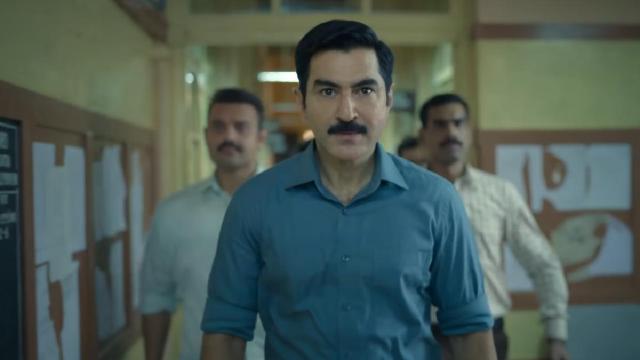
Cop onslaught in the red and green bastion feels contrived
Some sharp twists and dramatic turns by Prosenjit Chatterjee and Saswata Chatterjee can’t salvage this reductive exploration of gore and grunge in Bengal
A good student of cinema, creator Neeraj Pandey keeps revising chapters that eulogise the exploits of men in uniform and fatigues. This is a syllabus where he scores well. After an engrossing Bihar file that took us to the vortex of caste and crime in Bihar, Pandey and his creative team travel further east to open a window on the games politicians play for power in West Bengal. Barun Roy (Prosenjit Chatterjee), a powerful politician and businessman, uses criminals and policemen to remain ahead of the opposition, led by Nibedita Basak (Chitrangada Singh). Ganglord Shankar Barua (Saswata Chatterjee), who has risen from poverty to gain popularity among the deprived, does a dirty job for the kingmaker. However, in the politics of fear, Baruah alias Bagha loses control over his den when his two enterprising acolytes, Sagar (Ritwik Biswas) and Ranjit (Adil Khan), let their egos and ambition get the better of them and they shoot down two police officers. To clear the mess, Roy brings in an honest police officer Ajay Mitra (Jeet) for whom ends are more important than means. But, as expected, the plan backfires.
All 12 reviews of Khakee: The Bengal Chapter here
Kanneda
Rahul Desai
The Hollywood Reporter India

All Ambition, Little Guile
The eight-episode series struggles to capture the Punjabi immigrant experience in 1990s Canada.
Kanneda, the title of this eight-episode drama, is “Canada” pronounced with a Punjabi twang. The theme is clear — an Indian immigrant story that unfolds in the awkward cultural gap between Kanneda and Canada. The setting is Vancouver in the 1990s; the narrator helpfully tells us that racism is rampant and Punjabis continue to be treated as second-class citizens. The central character is Nirmal ‘Nimma’ Chahal (Parmish Verma), a young and hotheaded chap who slowly mutates from fairytale to cautionary tale. It’s a familiar journey: Nimma starts off honest (a rugby scholarship to kickstart a music career), before losing faith in the system and getting into the drugs-and-gangster business. Flashbacks allegedly suggest that his family left Punjab during the 1984 Anti-Sikh riots, but his trauma looks anything but generational.
All 3 reviews of Kanneda here
Khakee: The Bengal Chapter
Bharathi Pradhan
Lehren.com
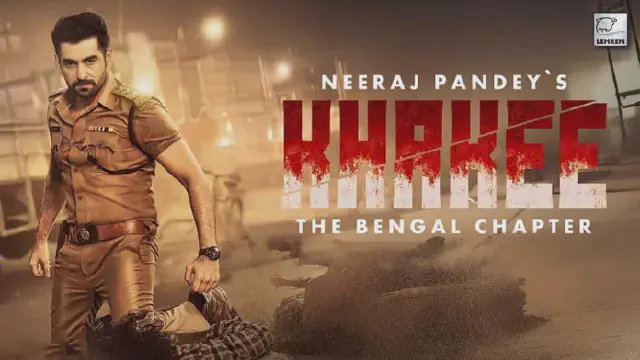
Crisp As Kurkuri Fried Fish
In the early 2000s, after a respected officer's death in Bengal, IPS Arjun Maitra takes on powerful gangsters and corrupt politicians. He is determined to restore law and order in a region plagued by crime and chaos.
Show creator Neeraj Pandey shifts the men (and one token woman) in khaki across the state border to plonk them among the gangsters and politicians of West Bengal. Netas and criminals go hand in hand whichever state they may be in. It takes off with police officers Aartrika (Aakanksha Singh) and Himel (Mimoh Chakraborty) meeting with an accident. They’ve been hit. There’s a mole in their team. CM Shirshendu Chatterjee (Subhasish Mukherjee) and suave, wily party heavyweight Barun (Prosenjit Chatterjee) would like to continue with pliable police officers and have their secret alliances with gangsters like Shankar Bagha (Saswata Chatterjee). But opposition leader Nibedita Basak (Chitrangada Singh) is screaming her lungs out about the destruction of Bengal by the ruling party and its criminal buddies. “The City of Joy has turned into a City of Bhoy (fear)”.
All 12 reviews of Khakee: The Bengal Chapter here
Khakee: The Bengal Chapter
Shubhra Gupta
The Indian Express
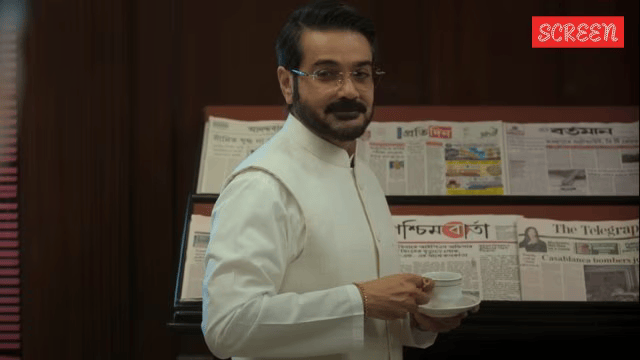
Prosenjit, Saswata Chatterjee’s show flattened by banality
Apart from the fact that the faces are mostly Bengali actors -- Prosenjit, Jeet, Ritwik Bhowmik, and Saswata Chatterjee -- the Netflix show comes off as same old.
With the catchy title song going, ‘ek aur rang bhi dekhiye Bengal ka’, we are hopeful that this new Neeraj Pandey series, Khakee The Bengal Chapter, set in Calcutta/Kolkata, will actually be different. The eight-part show starts with a kidnapping gone wrong, and then the story begins unpacking its wares in right earnest: sloppy goons, sharp cops, a posse of politicians with murky underground connections, nefarious activities involving dead bodies and organ harvesting. A promising start quickly descends into predictability. The beats are familiar, the character types are even more so. Apart from the fact that the faces are mostly Bengali actors — some familiar, some not so — Khakee The Bengal Chapter comes off as same old. And that’s too bad, because the ensemble comprises some of the most popular actors working in Bengali, starting with top stars Prosenjit Chatterjee, Parambrata Chattopadhyay, and Jeet, amongst others.
All 12 reviews of Khakee: The Bengal Chapter here
Follower
Keyur Seta
(for The Common Man Speaks)
Bollywood Hungama
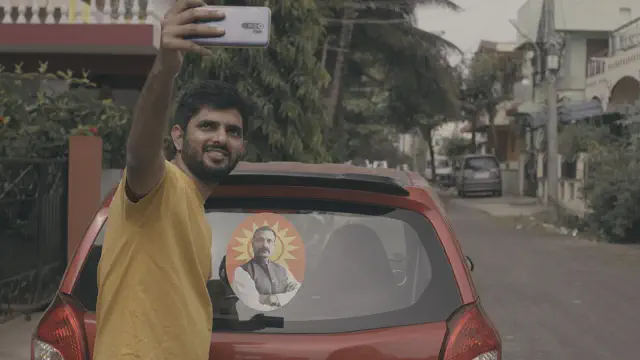
Realistic glimpse into the making of a political troll
What makes Follower more interesting and intriguing is that it organically weaves a story of close friendship between three friends and perfectly joins the same with the political conflict. It also makes fine use of flashback. The story could have been narrated in a linear form and it still would have been likeable. But the back and forth narrative converts the film also into a mystery drama. The events that lead Raghu into becoming a staunch supporter of the star political leader is the biggest triumph of the film. The production value makes the film look more like a telefilm. The lack of proper resources is clearly visible. This, however, doesn’t turn out to be a major issue because of the strong content at hand. The film is also shot in a creative manner by cinematographer Saket Gyani. It is laced with a number of impressive long one-take shots. The one that takes the cake is between Raghu and Parveen when both are riding their respective two-wheelers while conversing. The background score is minimally used, which goes with the nature of the film.
All 2 reviews of Follower here
Khakee: The Bengal Chapter
Shomini Sen
Wion
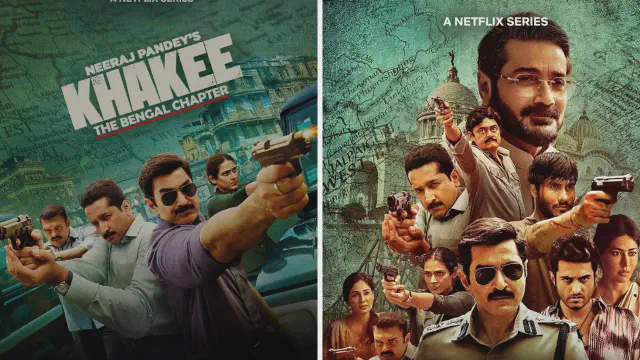
Prosenjit Chatterjee, Ritwik Bhowmik and Jeet's performances alleviate a predictable story
The biggest win of Khakee: The Bengal Chapter is its casting. It casts some of the most prominent faces of the Bengali film industry and almost all are top form.
Police vs the underworld is a trope that Indian cinema has adapted too many times. An honest officer trying to clean the system even as he and his force are outdone by smart crooks who are hand in glove with the powerful leaders is a story well too familiar. Netflix’s new series Khakee: The Bengal Chapter falls in a similar category- where an honest and brave IPS officer is out to clean up the city- in this case Kolkata- even as his work is hindered by powerful leaders and local crooks. Showrunner Neeraj Pandey and directors Debatma Mandal and Tushar Kanti Roy shift the cop drama from rural Bihar (The first part was Khakee: The Bihar Chapter) to the underbelly of Kolkata where goons and politicians work hand in hand and run a nexus of organ trading, kidnapping, real estates and more. Everyone knows that the system is corrupt and people in government are involved but the honest are scared to raise an alarm while the local goons want a piece of the pie.
All 12 reviews of Khakee: The Bengal Chapter here
Khakee: The Bengal Chapter
Ishita Sengupta
Independent Film Critic
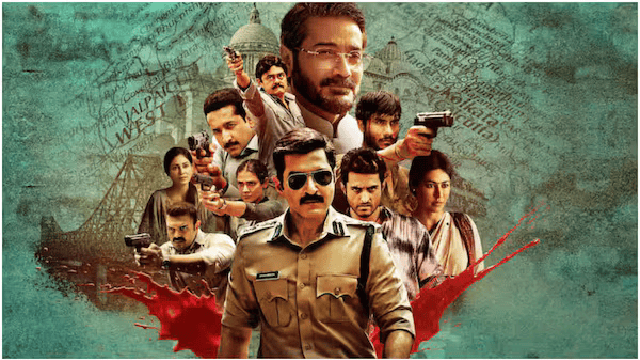
The Bengal Chapter Is A Toothless Political Thriller
Neeraj Pandey's show undercuts nuances and unfolds as an inflated cat-and-mouse thriller that could have been set anywhere and at any time. The lay of the land has little bearing on the proceedings.
LAST WEEK, a tightly wound, one-shot wonder called Adolescence dropped on Netflix. It took a couple of days and the verdict was out: this is the streamer’s breakout show of the year. Like Baby Reindeer was in the previous year and the first season of Squid Games, the Korean survival thriller, was in 2021. The list keeps expanding as one looks back but the dearth of Indian titles is conspicuous. Vikramaditya Motwane’s Sacred Games (2018) was a formidable start but the mentions have only been leaner with time. There is a distinct kind of non-commital work that is more content in occupying space than inhabiting time. They speak a lot but say too little. Except for Motwane’s Black Warrant (co-directed by Satyanshu Singh), most Netflix originals from India this year have been an assembly line of similar-looking production. Neeraj Pandey’s sprawling Khakee: The Bengal Chapter, the second part of his Khakee franchise, is the newest addition.
All 12 reviews of Khakee: The Bengal Chapter here
My Melbourne
Bhawana Somaaya
(for Bhawana Somaaya)
92.7 Big FM
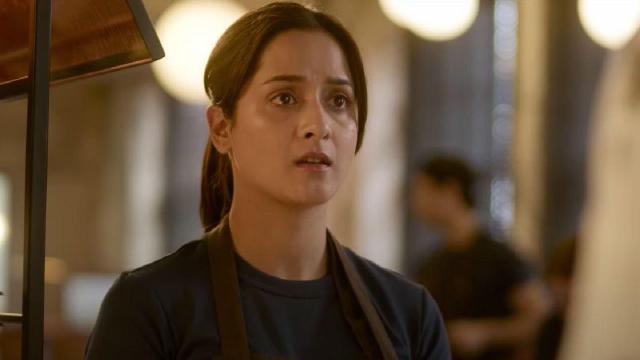
One more anthology
There was a time, a little before Covid, when all filmmakers were making anthologies. These films were usually about common subjects like love and loss. Last week, I watched an unusual anthology titled My Melbourne. Four directors come together to tell you real stories. Shot in Melbourne and featuring women, the stories address gender, sexuality, nationality and disability. The film opens with Nandini directed by Onir and introduces you to Indraneel/ Arks Das and Chris/Jackson Gallagher who live in Australi. Indraneel’s father is visiting them from India because Indraneel and he have to collectively immerse the ashes of Nandini, Indraneel’s mother. It is a difficult time for the father and son but they make an effort to let bygones be bygone.
All 2 reviews of My Melbourne here
Khakee: The Bengal Chapter
Rahul Desai
The Hollywood Reporter India
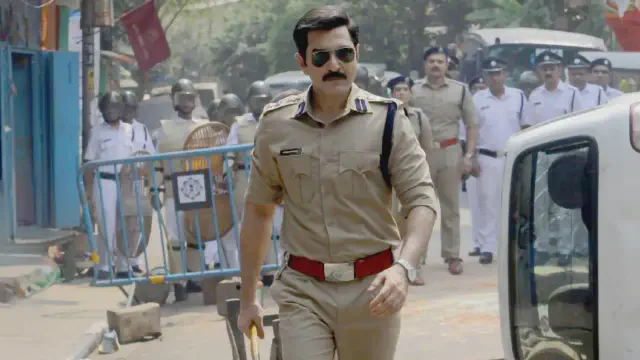
A Crime Drama That’s More Algorithm Than Rhythm
Creator Neeraj Pandey’s follow-up to ‘Khakee: The Bihar Chapter’ is mid-tier popular entertainment.
Like Khakee: The Bihar Chapter (2022), creator Neeraj Pandey’s standalone sequel Khakee: The Bengal Chapter represents the awkward second rung of crime thriller television — too trashy to be taken seriously, too serious to be pulpy, too long to be bingeable, and too predictable to be culturally specific. It’s more or less an old-school Prakash Jha potboiler stretched into long-form entertainment. A loaded ensemble and the illusion of a grassroots narrative are supposed to offset the generic tone, a cyclical plot and a repetitive landscape. This time, the focus is Kolkata in the early 2000s, where a no-nonsense IPS officer arrives to clean up a city ripe with bloody gang wars, sinister politicians and confused cops. A reporter exclaims: “Is the City of Joy now the City of Bhoy (fear)?”. Thankfully, the show explicitly mentions the timeframe at some point, because this is the one city that makes it hard to distinguish a period setting from a modern one. Timelessness is an aesthetic here; I assumed it was 2025 until I spotted a character holding a Nokia 6600 (which still made it look like 2022). Unfortunately, rumours of a Sourav Ganguly cameo in this seven-episode drama remain rumours, despite there being plenty of scope for a princely outsider with shirt-twirling charisma leading a team of gritty underdogs.
All 12 reviews of Khakee: The Bengal Chapter here
Adolescence
Priyanka Roy
The Telegraph
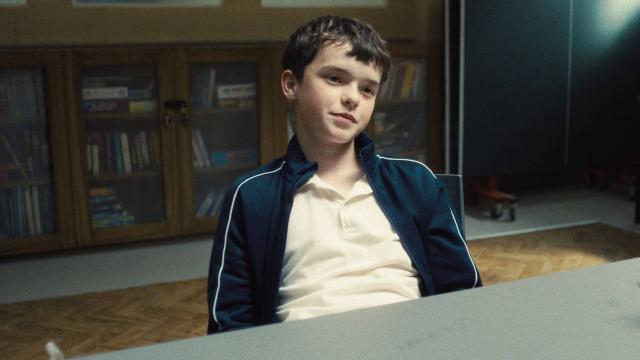
The world is raving about Adolescence, a riveting and horrific tale of the times we live in
Adolescence confronts the debilitating fear(s) of every parent — where are our children going? Who are they meeting? What kind of conversations are they having? Who or what is influencing them? And the biggest question of them all — what are our children watching? Ever since it dropped exactly a week ago, this Netflix miniseries has taken the world by storm. ‘A perfect piece of television’ is not a descriptor that comes by easily, but Adolescence has earned that in more than a few reviews. On social media, it is being discussed, debated and dissected. Besides the overall impact of this four-episode series, almost every scene, dialogue, body language and more, is being put under the microscope, even as the viewer peels off layers and semi-layers of this crushing yet cathartic watch.